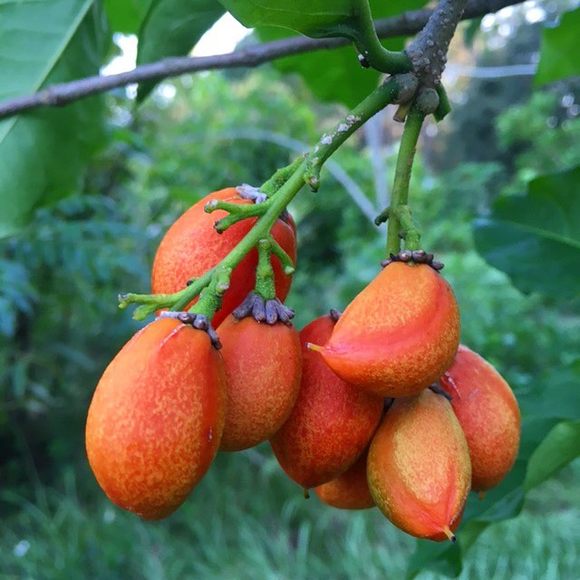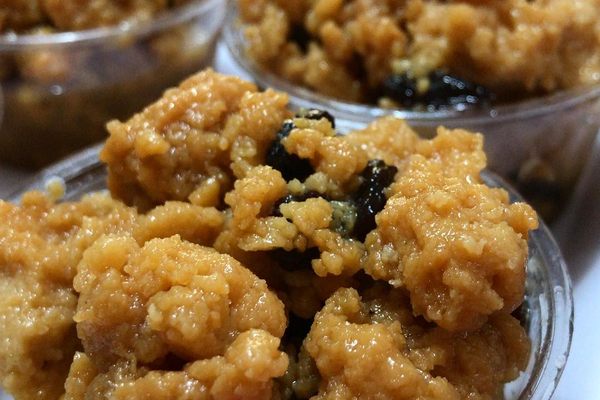Many fruits are marketed with deceptive names that suggest they taste like something else. Pineberries aren’t the pineapple-berry hybrids they promise, the blackberry-jam fruit actually tastes like honey, and the black persimmon of Central America sometimes tastes more like sweet mush than “chocolate pudding fruit.” South America’s peanut butter fruit, however, is a rare example of a plant that consistently delivers on its moniker.
This small fruit, whose color ranges from orange to red, resembles a grape tomato. But instead of the tomato’s tart, sweet juiciness, this plant smells and tastes like peanut butter. When properly ripened, it even has a smooth, dense pulp with a texture that’s comparable to what you’d find in a jar of the creamy spread. In addition to the nutty taste, there are also hints of sweet potatoes and berries. A more appropriate name might be “peanut butter and jelly fruit.”
This little unassuming treat is commonly eaten raw, but cooks in Andean regions also blend it into milkshakes, bake it into cakes and muffins, and mix it into jams. The latter is not only a great way to get the flavor of a peanut butter and jelly sandwich into one jar, but also might be a perfect solution to making a PB&J without the concern for triggering a peanut allergy.
Written By
 Jared Rydelek
Jared Rydelek
Sources
- www.specialtyproduce.com/produce/Peanut_Butter_Fruit_13580.php
- www.daleysfruit.com.au/newsletter/february2002.htm
- books.google.com/books?id=vofwAAAAMAAJ&q=Bunchosia+armeniaca+milkshake&dq=Bunchosia+armeniaca+milkshake&hl=en&sa=X&ved=0ahUKEwjz0b3yhcnYAhWiUd8KHWfaAEYQ6AEINDAC
- link.springer.com/chapter/10.1007/978-94-007-2534-8_19?no-access=true
- books.google.com/books?id=uRHwlkQVS2QC&pg=PA150&dq=Bunchosia+armeniaca&hl=en&sa=X&ved=0ahUKEwjsrrjihMnYAhXyk-AKHR3QA4AQ6AEIJzAA#v=onepage&q=Bunchosia%20armeniaca&f=false
- books.google.com/books?id=HORIzBx17DYC&pg=PA97&dq=Bunchosia+argentea&hl=en&sa=X&ved=0ahUKEwiElJ6F2MjYAhVCziYKHRdXArIQ6AEIPjAE#v=onepage&q=Bunchosia%20argentea&f=false















